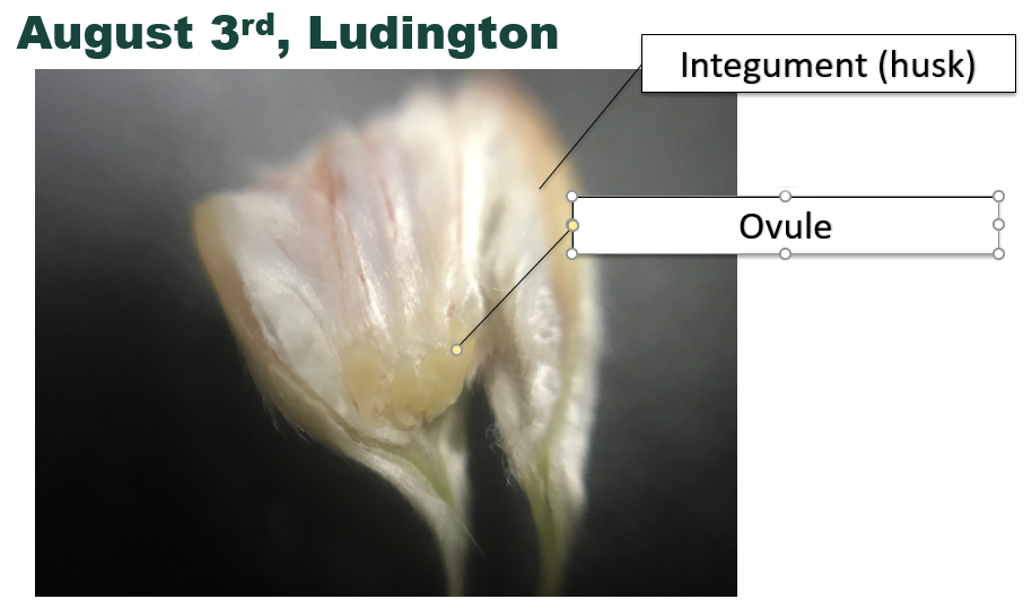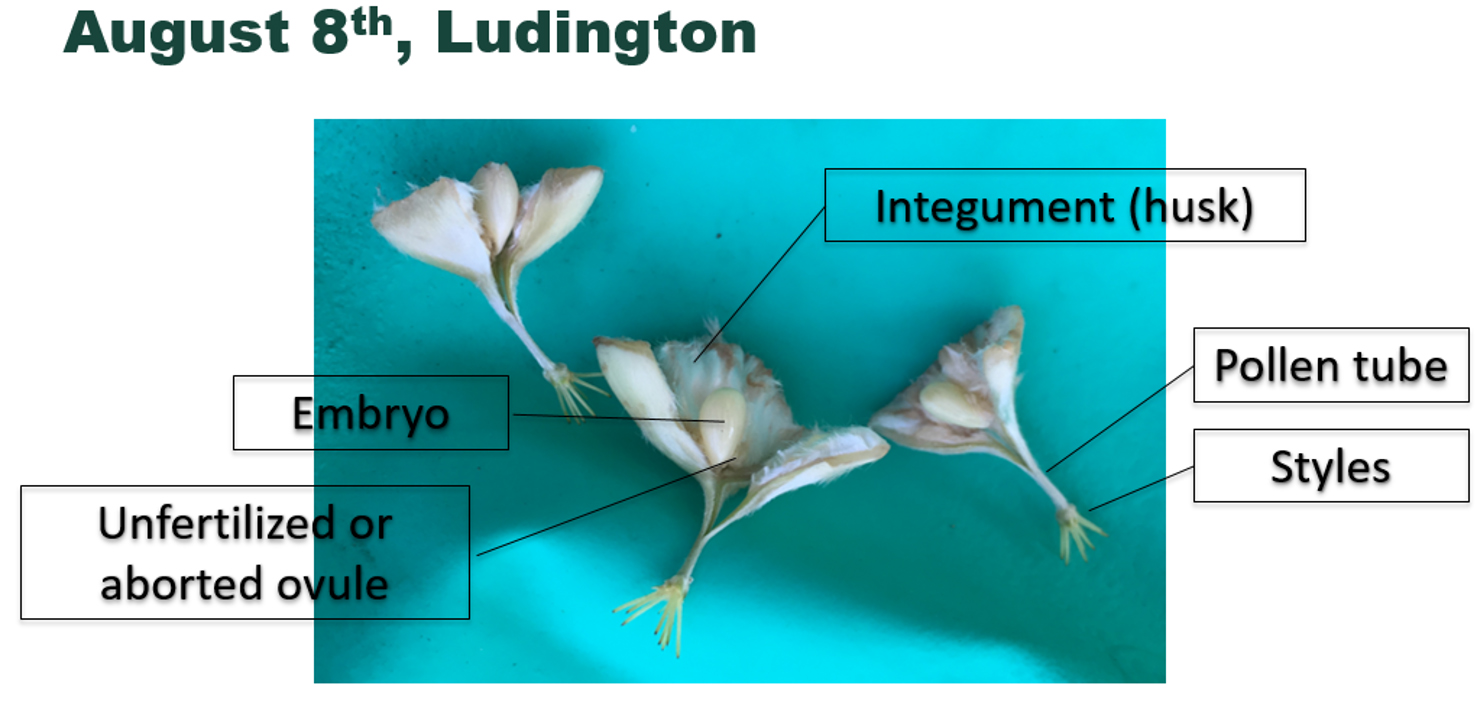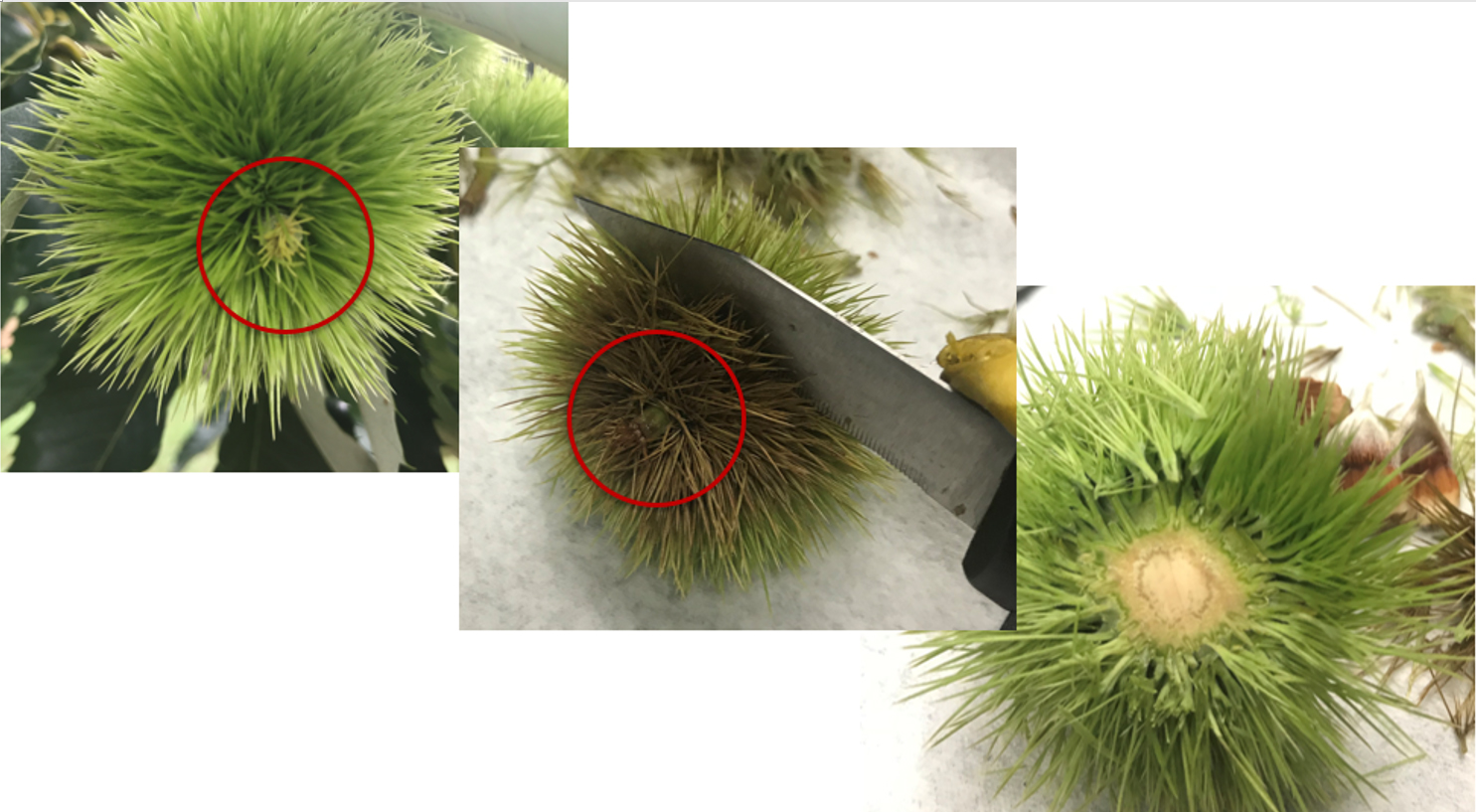Opportunities for early and accurate chestnut crop estimation
Accurate crop estimation is key to industry success.

It is beneficial for chestnut growers, and the chestnut industry in general, to accurately estimate the crop each year, as this is the start of the process of setting prices and managing overall marketing. Chestnut market negotiations start as early as August, particularly in years with large crops. Commonly, chestnut crop load is estimated visually in early September (refer to the article Estimating Crop Load in Edible Chestnuts for more information). However, MSU Extension reports growers have an opportunity for a preview of potential crop load in early August by implementing a subsampling method to quantify the percentage of embryos (nuts) that are developing within burs.
There are a number of factors that affect crop load, including pollination, environmental factors, tree health, etc. By subsampling young burs, growers are able to visually confirm if pollination has occurred and an embryo is forming in early August. This also allows growers to forecast the impact of “August drop,” which occurs every year when the burs that do not contain developing embryos are shed from the tree prematurely in late August and early September.
To complete an early crop estimate, growers should collect a representative sample of burs from trees in early August and begin looking for embryo development by peeling the bur and inspecting the contents. Collect representative burs from all cultivars and age classes. Growers should also sample from all sides of the trees as well as from varying heights. Estimations become more accurate as sample sizes increase. If growers observe a high level of variability in the samples, a larger sample may be required to improve estimation. Sample size also has to be balanced with the destructive nature of the sampling.
The progress of embryo development will vary from year-to-year, but growers can start checking burs during the first week in August. The first week in August, growers will likely see ovules and integument inside developing burs but will likely not be able to determine if fertilization has occurred or if a kernel will form (Figure A).
By the second week in August, growers might be able to spot the beginning of embryo development, confirming that fertilization has occurred and a kernel will form (Figure B). MSUE.

Keep in mind, pollen receptivity is staggered by a few days so embryo size variability is to be expected. As kernel development progresses into September, growers can simply make an equatorial cut across the bur (just behind the female styles) to determine how many kernels are developing in a bur (Figure C).

This method of estimating embryo development can help growers more accurately provide early crop estimates when used in concert with the crop estimation method described in the article Estimating Crop Load in Edible Chestnuts .
Special thanks to Pete Conrad for his help in developing this method.
Stay in touch!
Check out the MSU Extension Chestnut website. Follow us on Facebook at Michigan State University Chestnut News. Sign up to receive the Fruit and Nut Digest. Consider membership in the Midwest Chestnut Producers Council and join us for the Chestnut Lunchtime Webinar Series (taking place now)!
This work is supported by Project GREEEN and the Crop Protection and Pest Management Program 2017-70006-27175 from the USDA National Institute of Food and Agriculture. Any opinions, findings, conclusions or recommendations expressed in this publication are those of the author(s) and do not necessarily reflect the view of the U.S. Department of Agriculture.
This work also supported by the Rogers Reserve Endowment.



 Print
Print Email
Email




